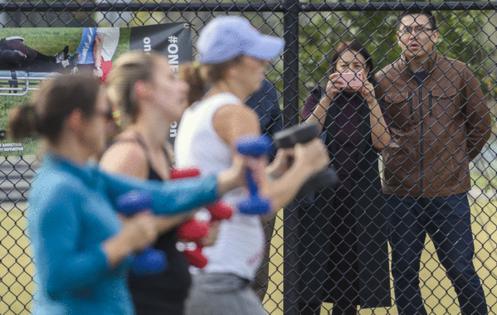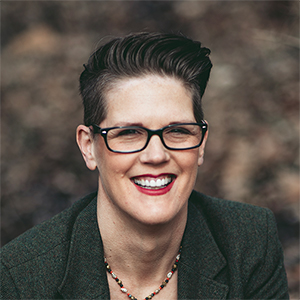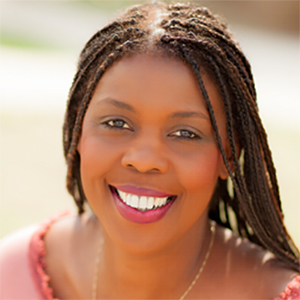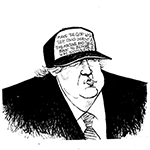Lisa Jarvis: The most valuable menopause fitness hack
Published in Op Eds
Earlier this year, I glommed onto a trend that is sweeping women of a certain age in the U.S,: I became a woman who lifts.
Admittedly, describing myself as such feels like an overstatement of my fitness level. Seven months in, and I still can’t do a pull-up, while my dumbbell incline press tops out at 40 pounds. But I am a regular at a women-inclusive gym that has nary a stair stepper or treadmill and is purely focused on helping women get strong.
This middle-aged woman has perhaps a more modest goal: not to get weak as I grow older. Women’s current obsession with lifting coincides with a push to better meet their needs during the menopause transition. As recently as 2020, less than a quarter of women in midlife were getting in enough strength training. Yet maintaining muscle mass is vital for healthy aging.
That’s a message that doctors too often failed to deliver to women in the past, says Lisa Larkin, the CEO of the women’s health care company Ms. Medicine and immediate past president of the Menopause Society. “We have really focused on bone loss, but not on the change in body composition and loss of muscle,” she says.
Our bodies undergo a major change at midlife. We become less active as we get older, and hormone levels are changing, as is the balance of fat and lean muscle.
That has real health consequences. The extra pounds of belly fat aren’t just making it harder to fit into your favorite jeans; they’re amplifying the risk of heart disease and Type 2 diabetes. And the decline in lean muscle mass makes us weaker and frail later in life, meaning we’re at a higher risk of falls and fractures.
But the moment a perimenopausal woman starts trying to figure out how to combat that, she’s likely to find herself going down a rabbit hole that can lead to junk science and grifts.
Scroll through any 40-something woman’s social media feed, and you’ll find a stream of influencers, including many doctors, offering advice for managing that decline. It can be dizzying. Strength training is crucial, they say. But be careful not to lose flexibility. Don’t forget the cardio! But don’t work out too hard, either. Why aren’t you on hormones already? Take these four supplements to avoid “mom bod” by age 50.
Lurking beneath much of this advice is a pitch for a product that will benefit someone —unfortunately, not always the woman buying it.
For example, take a short walk around many neighborhoods and you’re sure to come across a middle-aged woman wearing a weighted vest. They’ve become so ubiquitous, one might think they were part of a 40-something welcome pack (other items include reading glasses and an appointment for a colonoscopy).
Their popularity is no doubt due in part to menopause influencers, who, coincidentally, often sell their own vests or get commission if you buy one from their Amazon.com Inc. store. They claim the equipment offers magical muscle-building and bone-strengthening properties. That sounds intuitive. And how convenient would it be if simply adding an extra load could turn a mundane task like walking the dog into an anti-aging exercise?
But while they might help your heart pump a little harder, evidence that the vests can help preserve muscle and bone is scant. Some studies show they don’t work at all, and the ones that suggest a benefit are flawed. Influencers often point to promising bone strength results from a tiny study, but it compared postmenopausal women who exercised with a vest to women who didn’t exercise at all. (Unsurprisingly, those who exercised fared better than those who didn’t.)
Building muscle requires the right amount of resistance, which we’re not getting while walking — even with a weighted vest, says Lauren Colenso-Semple, a muscle physiology researcher. “That’s why lifting weights can’t be replaced with other forms of activity.”
This isn’t to suggest the vests do harm. If pulling it on is motivation to take a walk, then go for it. And it can boost the weight-bearing load to your existing strength training workout.
Women embarking on a strength training journey might also find themselves trying to sift through how to eat in order to build or retain muscle. They’ll no doubt find plenty of influencers suggesting they will wither away without gargantuan amounts of protein (most ideally, the protein powders and shakes they are selling).
While it’s true that protein fuels muscle growth — and that many experts believe the recommended daily allowance of it is too low — some influencers are pushing people to eat as much as 200 grams of protein per day. Those levels aren’t harmful to someone with good kidney function, Colenso-Sample says, but the returns are diminishing after about 1.6 grams per kilogram. (That’s just under 110 grams per day for someone who weighs 150 pounds.)
Most people can get what they need by eating a decent portion of protein at each meal, maybe with an added protein-rich snack or shake, she says.
Other examples abound of doctors and fitfluencers coaxing women into products they don’t need. Anyone feeling confused should focus on what does work. That’s pretty simple: most of us just need to get back to (or, in my case, start with) the basics by incorporating regular strength training into our lives. Lifting weights as little as once or twice a week can improve long-term health.
In the end, the most valuable menopause fitness hack can’t be bought — it’s finding a strength training routine you love. The goal, after all, is to make this a decades-long journey.
_____
This column reflects the personal views of the author and does not necessarily reflect the opinion of the editorial board or Bloomberg LP and its owners.
Lisa Jarvis is a Bloomberg Opinion columnist covering biotech, health care and the pharmaceutical industry. Previously, she was executive editor of Chemical & Engineering News.
_____
©2025 Bloomberg L.P. Visit bloomberg.com/opinion. Distributed by Tribune Content Agency, LLC.

























































Comments